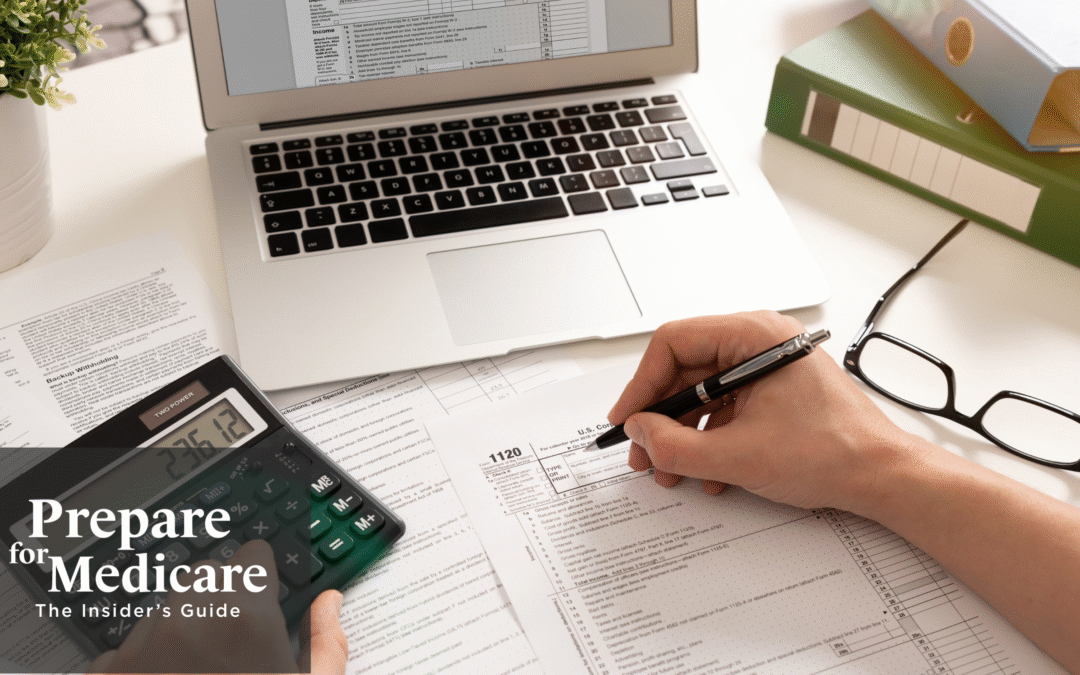If you just want the basics on IRMAA before diving in, start here: Understanding IRMAA. If your income recently dropped (retired, spouse passed away, etc.), read how to fight the surcharge: IRMAA Appeals for High-Income Retirees.
Which Year’s Income Sets My 2026 IRMAA?
Medicare uses the “two-year lookback.” For 2026 premiums, Social Security looks at your 2024 MAGI. If that number is above the government’s income thresholds, you’ll be placed into an IRMAA bracket for Part B and Part D.
Heads up: SSA/CMS publish the official brackets each fall. When the 2026 brackets are released, we’ll update this page and the hub here: IRMAA. You can also review what Part D actually covers and why IRMAA is separate from your drug copays: What Does Medicare Part D Cover?
MAGI 101: What Counts Toward IRMAA
IRMAA is based on MAGI = your Adjusted Gross Income (AGI) plus certain add-backs. Here’s what typically pushes people over a bracket:
- Wages, salaries, bonuses (including partial-year pay before retirement)
- Taxable Social Security benefits
- Traditional IRA/401(k)/403(b) withdrawals and Required Minimum Distributions (RMDs)
- Capital gains (selling a house, business, rental, or large positions in a brokerage account)
- Interest and dividends (including short-term gains from fund distributions)
- Tax-exempt interest (e.g., municipal bond interest is added back for MAGI)
- Roth conversions (the converted amount is taxable in the year you convert)
- Business, rental, and K-1 income
Common surprise: one-time events—like a big Roth conversion, selling stock, or a severance package—can spike MAGI and trigger IRMAA for a full year two years later.
What Usually Doesn’t Count Toward IRMAA
- Roth IRA withdrawals (qualified)
- HSA contributions (pre-tax) and HSA withdrawals for qualified medical expenses
- Return of principal (e.g., selling an asset at no gain)
- Loans (proceeds aren’t income)
Edge cases exist—always confirm with your tax professional. If you’re still on an employer plan and weighing timing, see our guidance around Part B and planning: Medicare Mistakes to Avoid.
IRMAA Brackets: How to Read Them
IRMAA brackets are tiered. Cross a bracket by even one dollar and you jump to the next surcharge level for the year. A quick way to think about it:
- Base premium only – below the first threshold
- Bracket 1–5 – surcharges grow with income
Action step: When the official 2026 brackets are posted, locate your filing status (single or married filing jointly), find your 2024 MAGI, and note the Part B add-on and the separate Part D add-on. Those add to your plan premiums.
One-Time Spikes That Trigger IRMAA
- Large Roth conversions in one calendar year
- Asset sales creating big capital gains
- Final year wages/bonuses before retirement
- RMDs combined with other income sources
If your income has since fallen due to a life-changing event—retirement, divorce, death of a spouse, loss of pension—consider an appeal to recalculate: IRMAA Appeals for High-Income Retirees.
Planning Ideas to Manage IRMAA (Not Tax Advice)
- Spread conversions over multiple years instead of doing one large conversion
- Time capital gains across tax years to avoid jumping brackets
- Coordinate RMDs with charitable strategies (e.g., qualified charitable distributions may help reduce MAGI impact)
- Watch “bridge years” around retirement when wages + withdrawals overlap
Your situation is unique—coordinate with a fiduciary advisor or CPA who understands Medicare’s two-year lookback.
Related Reading & Next Steps
- Understanding IRMAA
- IRMAA Hub: 2026 Guide
- How to Appeal IRMAA (SSA-44)
- What Does Medicare Part D Cover?
- Medicare Mistakes to Avoid
- Medicare Changes
- How to Read Your Medicare ANOC
- Medicare Provider Search Guide
- Turning 65: Medicare Enrollment
- Medicare Advantage MOOP: Out-of-Pocket Limits
- Medicare Star Ratings Explained
- Can You Use GoodRx with Medicare?




